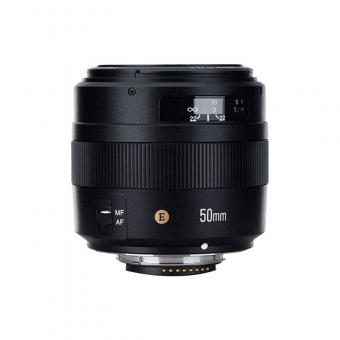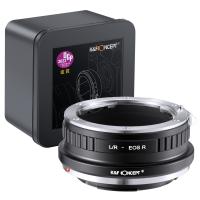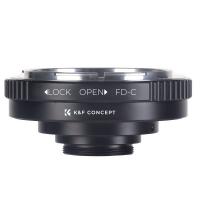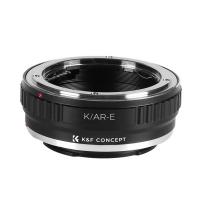Why Is My Digital Camera Blurry ?
There could be several reasons why your digital camera is producing blurry images. It could be due to a dirty lens, incorrect focus settings, camera shake, low light conditions, or a problem with the camera's autofocus system.
1、 Focus settings not adjusted properly
"Why is my digital camera blurry?"
One possible reason for a digital camera to produce blurry images is that the focus settings are not adjusted properly. The focus settings on a camera determine where the lens is focused, and if they are not set correctly, the resulting images can appear blurry or out of focus.
There are several factors that can contribute to improper focus settings. One common mistake is not selecting the appropriate focus mode for the subject being photographed. For example, if you are taking a portrait, using the auto-focus mode may not accurately focus on the subject's face, resulting in a blurry image. In such cases, manually selecting the focus point or using a specific focus mode, such as portrait mode, can help achieve sharper images.
Another factor to consider is the distance between the camera and the subject. If the camera is too close or too far away from the subject, it can affect the focus. Some cameras have a minimum focusing distance, so if you are too close to the subject, the camera may struggle to focus properly. Similarly, if you are too far away, the camera may have difficulty capturing sharp details.
Additionally, camera shake can also cause blurriness in images. This can occur if the camera is not held steady while taking a photo, especially in low-light conditions or when using a slow shutter speed. Using a tripod or stabilizing the camera against a solid surface can help minimize camera shake and produce sharper images.
In conclusion, if your digital camera is producing blurry images, it is likely due to the focus settings not being adjusted properly. Taking the time to understand and adjust the focus settings, considering factors such as focus mode, distance to the subject, and camera stability, can greatly improve the sharpness and clarity of your photographs.

2、 Dirty lens or sensor
"Why is my digital camera blurry?"
One of the most common reasons for a digital camera to produce blurry images is a dirty lens or sensor. Over time, dust, fingerprints, and other debris can accumulate on the lens or sensor, resulting in a loss of image clarity. This can cause the camera to struggle to focus properly, resulting in blurry photos.
To address this issue, it is important to regularly clean both the lens and sensor of your digital camera. Cleaning the lens can be done using a soft, lint-free cloth or a lens cleaning solution specifically designed for camera lenses. Gently wipe the lens in a circular motion to remove any dirt or smudges.
Cleaning the sensor, on the other hand, requires a bit more caution and precision. It is recommended to use a sensor cleaning kit or take the camera to a professional for sensor cleaning. This is because the sensor is a delicate component and improper cleaning can cause damage.
It is worth noting that advancements in camera technology have led to the development of self-cleaning sensors in many modern digital cameras. These sensors have a mechanism that vibrates to shake off any dust particles. However, they may not be completely effective in removing stubborn debris, so manual cleaning may still be necessary.
In addition to a dirty lens or sensor, other factors can contribute to blurry images, such as camera shake, incorrect focus settings, or low light conditions. It is important to ensure proper camera handling techniques, use appropriate focus modes, and consider using a tripod or image stabilization technology to minimize camera shake.
In conclusion, if your digital camera is producing blurry images, the first step is to check and clean the lens and sensor. Regular maintenance and proper handling techniques can significantly improve image quality and clarity.

3、 Camera shake or movement during exposure
Camera shake or movement during exposure is one of the most common reasons why digital cameras produce blurry images. When you press the shutter button to take a photo, the camera's sensor needs to capture a sharp and clear image. However, if there is any movement or shake during this process, it can result in blurriness.
Camera shake can occur for several reasons. One common cause is holding the camera improperly or not using a tripod when necessary. When you hold the camera with your hands, even the slightest movement can cause blurriness, especially in low light conditions or when using a slow shutter speed. Additionally, pressing the shutter button too forcefully can also introduce shake.
Another factor that can contribute to camera shake is the focal length of the lens. Longer focal lengths amplify any movement, making it more noticeable in the final image. This is why it's important to use a faster shutter speed or a tripod when using telephoto lenses.
To minimize camera shake, you can try a few techniques. Firstly, make sure to hold the camera steady and use both hands while taking a photo. Additionally, using a tripod or a stable surface can greatly reduce shake. If you're shooting handheld, try to increase the shutter speed or use image stabilization technology if your camera has it.
It's worth noting that advancements in technology have led to the development of image stabilization systems in many digital cameras. These systems can compensate for camera shake and help produce sharper images. However, it's still important to be mindful of camera shake and take necessary precautions to avoid it.
In conclusion, camera shake or movement during exposure is a common cause of blurry images in digital cameras. By being aware of this issue and taking appropriate measures to minimize shake, you can greatly improve the sharpness and clarity of your photographs.

4、 Insufficient lighting conditions
"Why is my digital camera blurry?"
One of the most common reasons for blurry photos taken with a digital camera is insufficient lighting conditions. When there is not enough light available, the camera's sensor struggles to capture enough detail, resulting in blurry or out-of-focus images. This is especially true in low-light situations or when shooting indoors without proper lighting equipment.
Inadequate lighting affects the camera's ability to focus accurately and capture sharp images. When there is not enough light, the camera's autofocus system may struggle to lock onto the subject, leading to blurry photos. Additionally, the camera's shutter speed may slow down to compensate for the lack of light, resulting in motion blur if the subject or the camera moves even slightly during the exposure.
To overcome this issue, it is important to ensure sufficient lighting when taking photos. This can be achieved by using natural light sources such as windows or shooting outdoors during daylight hours. Alternatively, artificial lighting options like lamps, flashes, or studio lighting setups can be used to provide adequate illumination.
It is worth noting that advancements in camera technology have improved low-light performance in many digital cameras. Some cameras now feature larger sensors, better image stabilization systems, and higher ISO capabilities, allowing for better image quality in challenging lighting conditions. However, even with these advancements, it is still crucial to provide sufficient lighting to achieve sharp and clear photos.
In conclusion, if your digital camera is producing blurry images, it is likely due to insufficient lighting conditions. Ensuring proper lighting or utilizing the latest advancements in low-light photography can greatly improve the quality of your photos.






































